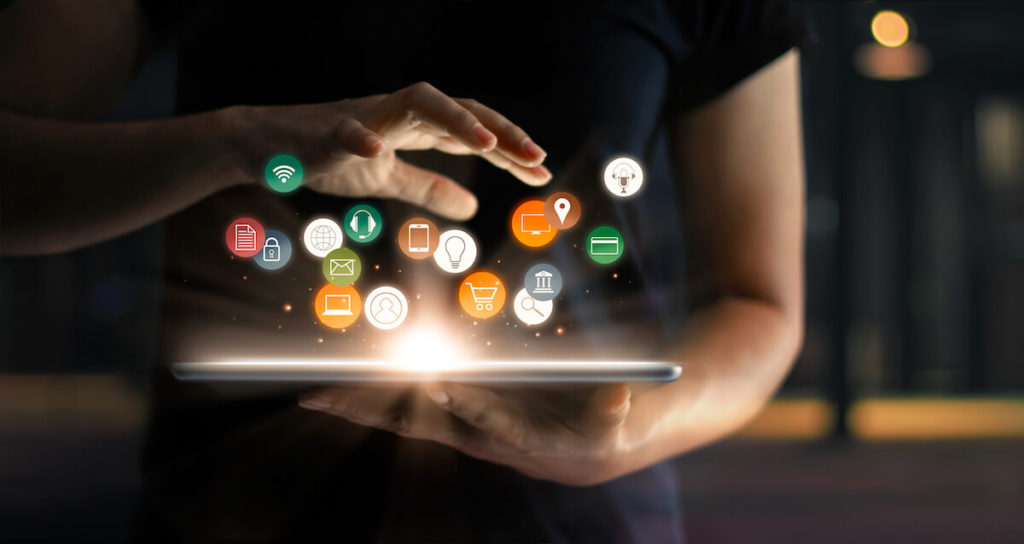
To say advertising has come a long way in the digital age is a major understatement. The introduction of new digital channels has opened up increasingly innovative ways to reach your target audience, improve conversion rates, and grow brand awareness.
There is no one-size-fits-all approach to selecting which digital marketing channels to use. But you also shouldn’t focus exclusively on one channel. Just like a well-rounded print campaign would account for magazines, newspapers, and billboards, understanding which digital channels are available will help you better reach your customers.
6 digital channels every marketer should consider

Limiting our list to just six digital marketing channels is actually cutting things a bit short. (But hey, we know you don’t have all day!) The list of ways to reach audiences online seems to only get longer. However, every effective digital marketing campaign should start by evaluating these options.
1. Your website
In the digital age, a company’s website is just as important as its brick and mortar storefront. This means your website needs to be up to snuff in terms of design, content, and speed. A website that works for both desktop and mobile devices will ensure that visitors won’t click away because of poor navigation or a layout that looks like it hasn’t been updated since the ‘90s.
Your website can also be the central hub of your content marketing efforts. Blog posts, infographics, case studies, and other quality content helps visitors understand your brand and its products or services. Engaging, relevant content will keep people coming back to your website to learn more, improving your SEO rankings, and creating new sales opportunities.
On the other hand, if your website looks like it is stuck in the ‘90s or like a bland digital brochure, it’s time to make an upgrade. If your company’s brick and mortar store had broken windows and plumbing leaks, you’d fix them right away — so do the digital equivalent for your website!
2. Social media

Let’s be real: Love it or hate it, these days, when most people think of digital channels, they think of social media marketing.
Now obviously, there are a ton of social media platforms you could use (not just Facebook). LinkedIn is ideal for B2B brands. Instagram is a good choice for e-commerce brands that want to show off new products with strong visuals. TikTok is the go-to channel for younger audiences.
In addition to your own paid social media ads and organic posts, you should consider partnering with relevant influencers in your niche. Influencer posts can expose your brand to new audiences while also creating a positive association between the brand and the influencer.
Just how powerful can influencers be? An AdWeek survey found that 53% of women on social media made a purchase as a direct result of an influencer’s post. And Google reports that 70% of teens relate more to YouTubers than traditional celebrities.
3. Search engine optimization (SEO)
When prioritizing digital channels, you can never ignore the almighty Google. HubSpot estimates that 5.6 BILLION searches are run on Google each day. And a lot of those organic searches are from people open to trying new products and businesses. Careful use of relevant keywords on your site, improving site speed, and other steps will help you rise in the rankings.
The higher you rank in search engine results, the more organic traffic you’ll get to your site. It doesn’t take a rocket scientist to know that more traffic equals more leads and sales!
Paid search engine marketing (SEM) and pay-per-click (PPC) campaigns can also supplement your SEO efforts. These paid placements put your company at the very top of the search results for your targeted terms.
In addition, the ability to target campaigns based on a customer’s location, interests, or search terms can greatly improve lead generation by putting the right ads in front of the right people. Keyword research is key (ba-dum tish) to targeting the phrases that are most relevant to the brand.
4. Email marketing
Email marketing is one of the most effective digital channels, with an average ROI of $36 for each $1 spent. You don’t get many deals better than that!
After you get a customer or lead’s email address, you have the ability to send branded messages directly to their inbox. Whether you are nurturing a lead and helping to build trust, sending out a newsletter update, or letting them know about a new sale, email marketing can play a vital role in accomplishing your campaign goals.
Email marketing can be even more effective when you personalize messages for each customer. Marketing tools can automatically trigger emails to be sent for abandoned carts, clicking on a particular link, and other actions so the right messages get sent at the right time.
Obviously, you have to find the right balance in how frequently you message customers this way. You don’t want to become a spammer!
5. Affiliate marketing

Affiliate marketing is one of the unsung heroes of digital advertising, particularly for e-commerce brands. Affiliate marketing is essentially the non-social media version of influencer marketing. Publishing partnerships feature your brand and its products — or even content marketing from the brand — on a third-party site.
These sponsored posts act as a powerful form of social proof for a website’s readers. When a blogger or publisher that they follow recommends your brand, awareness, trust, and (most importantly) interest in making a purchase goes through the roof.
After all, no matter how trustworthy you think you are, digital customers won’t necessarily feel the same way. A recommendation that comes from an unbiased third-party source will ultimately be way more persuasive than anything you might come up with on your own.
6. Audio advertising
Audio advertising has also entered the digital age thanks to podcasting, as well as music streaming channels and apps like Spotify, Pandora, and iHeartRadio. These digital channels can help you expand your audio reach beyond the listeners who live within range of a station’s broadcast tower.
Instead, you can use advanced targeting metrics to deliver high-quality audio ads to relevant audience members. Yes, you can still target your ads based on location. But you can also target based on other important demographic or behavioral factors to improve your ad relevance. After all, no two podcasts have the same audience (just like how radio stations can have very different audience demographics). The right podcast could be a huge boon to your campaign ROI.
While snagging placements on these digital audio platforms can still be expensive, Decibel Ads is helping to democratize access to these channels with an innovative approach to audio ad buying. We want to help everyone get the placements they need to effectively reach their target audience.
Choosing the right digital channels for your brand.

The sheer amount of digital channels that are available could make you feel like your head is going to explode! This list didn’t even cover display advertising or video marketing, which typically serve as digital versions of billboards or TV ads, respectively. But this doesn’t mean every campaign has to utilize every possible channel out there. Different channels reach different audiences.
Depending on your client’s digital marketing strategy and target audience, you might focus on audio advertising and social media. Other demographics might be better served through content marketing.
As you grow your online presence through these and other digital channels, your marketing will have a powerful impact on the customer journey.